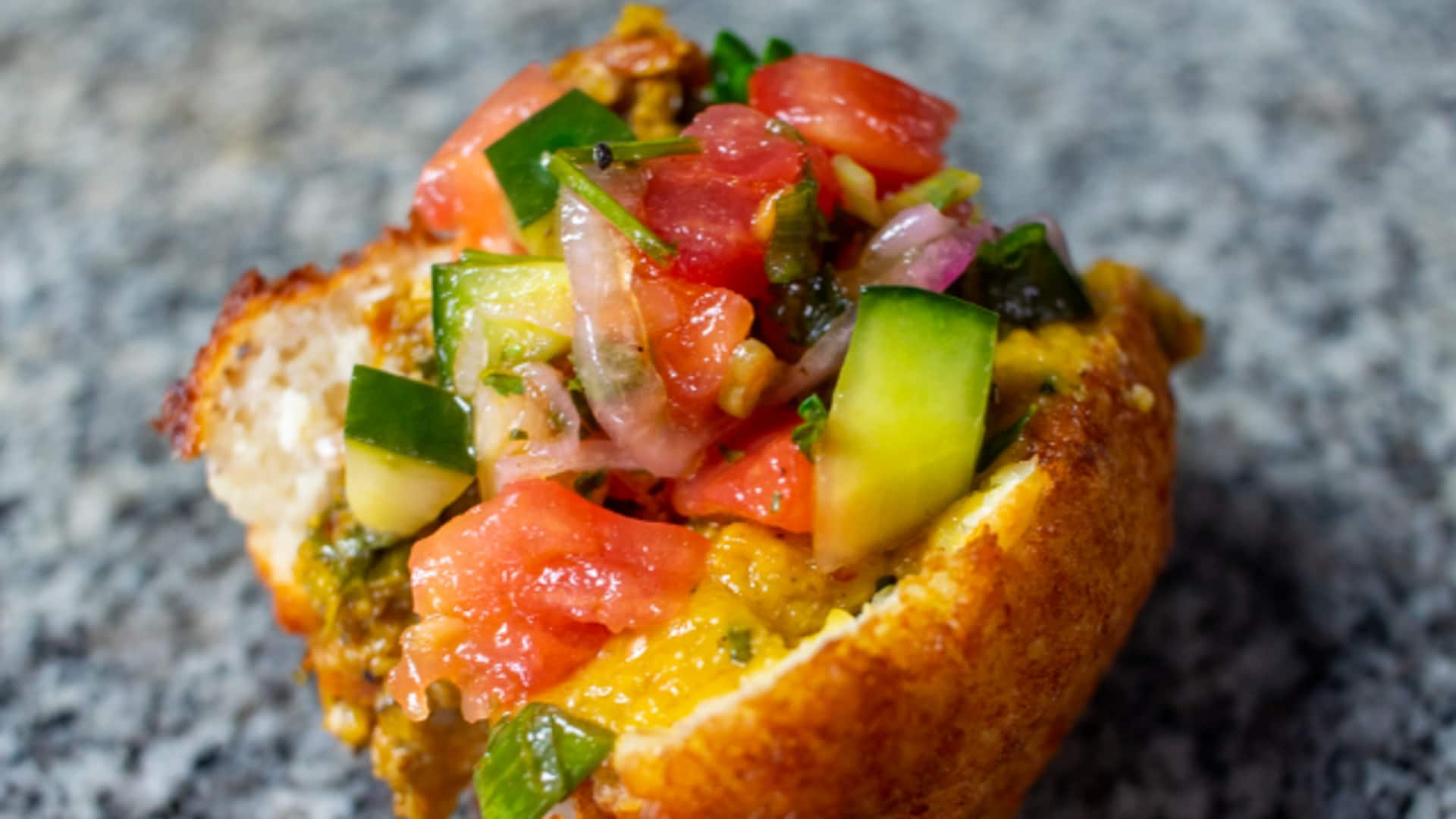
Brazil on your plate: Cook acaraje with vatapa at home
What's the story
Acaraje, a traditional Brazilian street food, is deeply rooted in the Afro-Brazilian culture of Bahia. Originating from Nigeria and brought to Brazil by enslaved Africans, it features deep-fried black-eyed pea cakes filled with vatapa. Typically made with shrimp, nuts, and dende oil, our version is vegetarian and eggless, making it accessible to more people. Let's get cooking.
Ingredients list
Gather the following ingredients
For acaraje, assemble two cups of soaked overnight black-eyed peas, one small chopped onion for flavor, salt to taste, and oil for deep frying. These ingredients are essential for crafting the base of the acaraje cakes, ensuring they're flavorful and have the correct texture once fried. This mix is the foundation for a delicious vegetarian version of this traditional Brazilian dish.
Step 1
Preparing the black-eyed pea batter
Start by draining the soaked black-eyed peas. Peel off their skins by rubbing them under running water; they should come off easily. Then, in a food processor, blend the peeled peas with chopped onion and a pinch of salt until smooth. The batter should be thick enough to maintain its shape when fried, ensuring the right texture for the acaraje cakes.
Step 2
Frying the acaraje cakes
Heat oil in a deep frying pan over medium heat. Once hot, use two spoons or an ice cream scoop to form balls of the batter and carefully drop them into the hot oil. Fry until they are golden brown on all sides. Remove them with a slotted spoon and drain on paper towels to remove excess oil.
Step 3
Making vegetarian vatapa
To make animal-free vatapa, blend unsweetened grated coconut, peanuts, cashews, chopped onion, minced garlic cloves, and grated ginger into a smooth paste. If needed, add some water for easier blending. In a pan over medium heat, heat palm or olive oil. Add the nut mixture with salt and chili powder to taste. Stir continuously until it becomes thick and creamy.
Step 4
Assembling acaraje with vatapa
Once the acaraje cakes and vegetarian vatapa are ready, begin assembly. Gently open each cake without cutting through completely, creating a pocket. Spoon a generous amount of vegetarian vatapa inside each pocket. It's crucial to serve these immediately while warm, ensuring the rich flavors and creamy texture of the vatapa are enjoyed at their best alongside the soft, warm acaraje cakes.